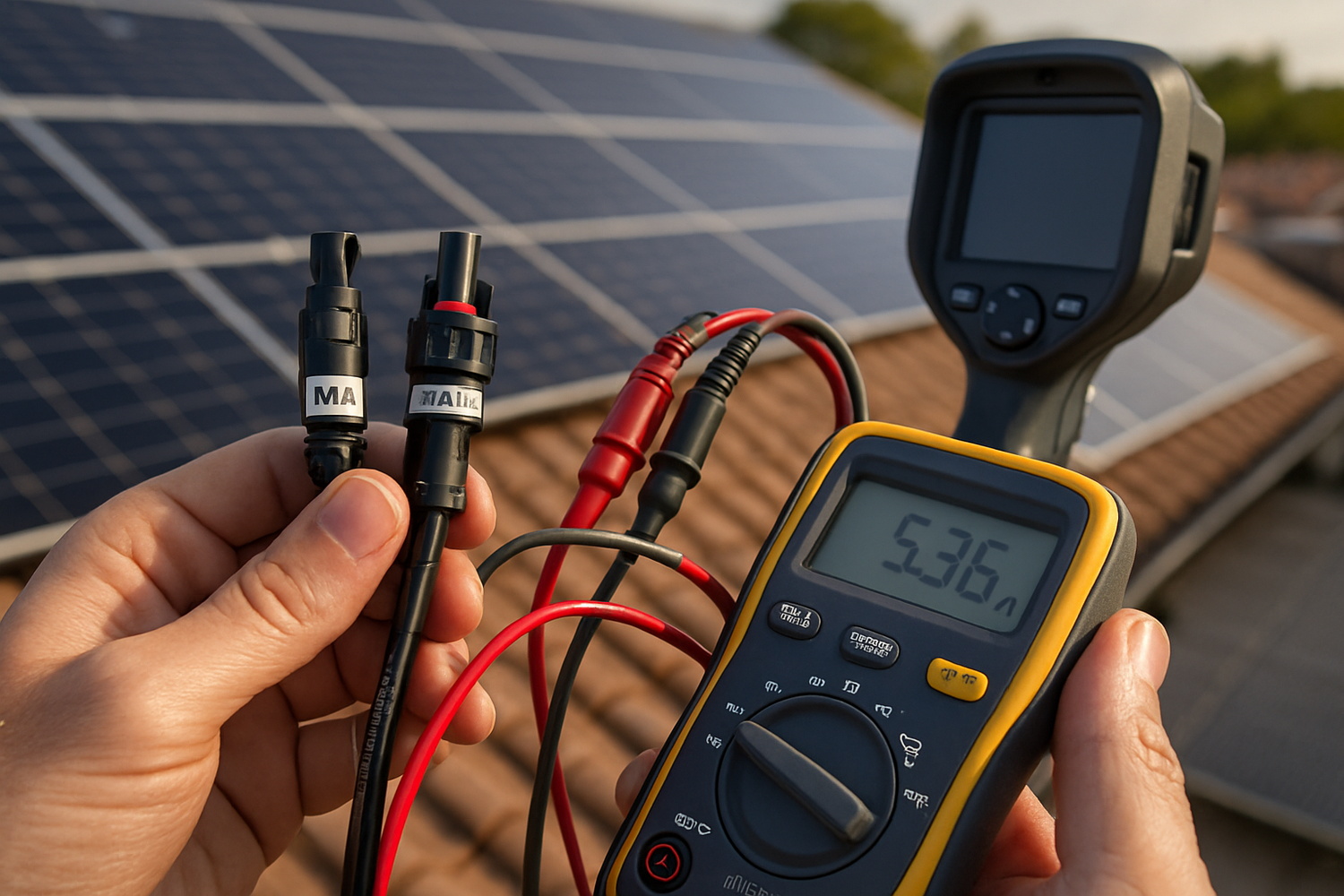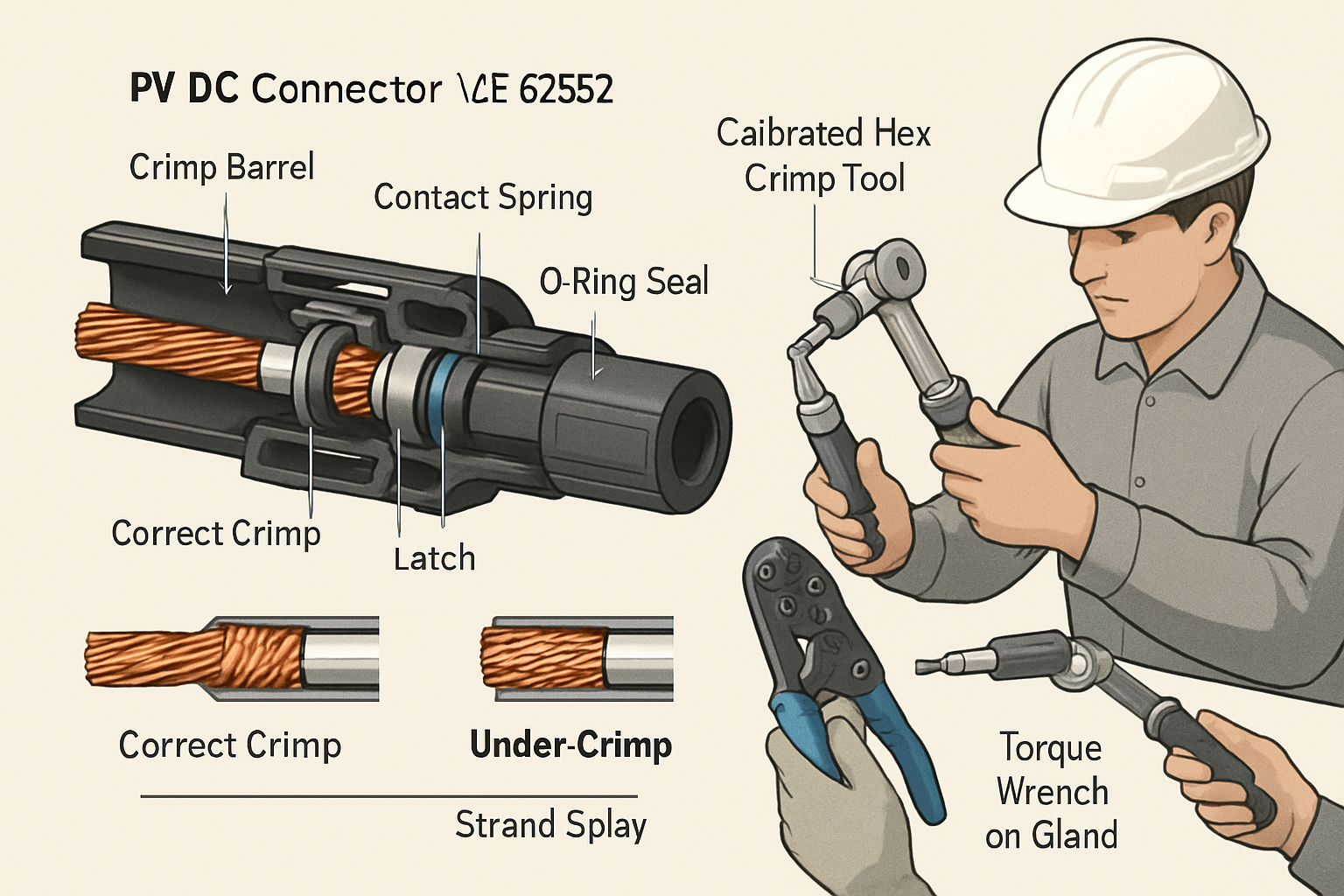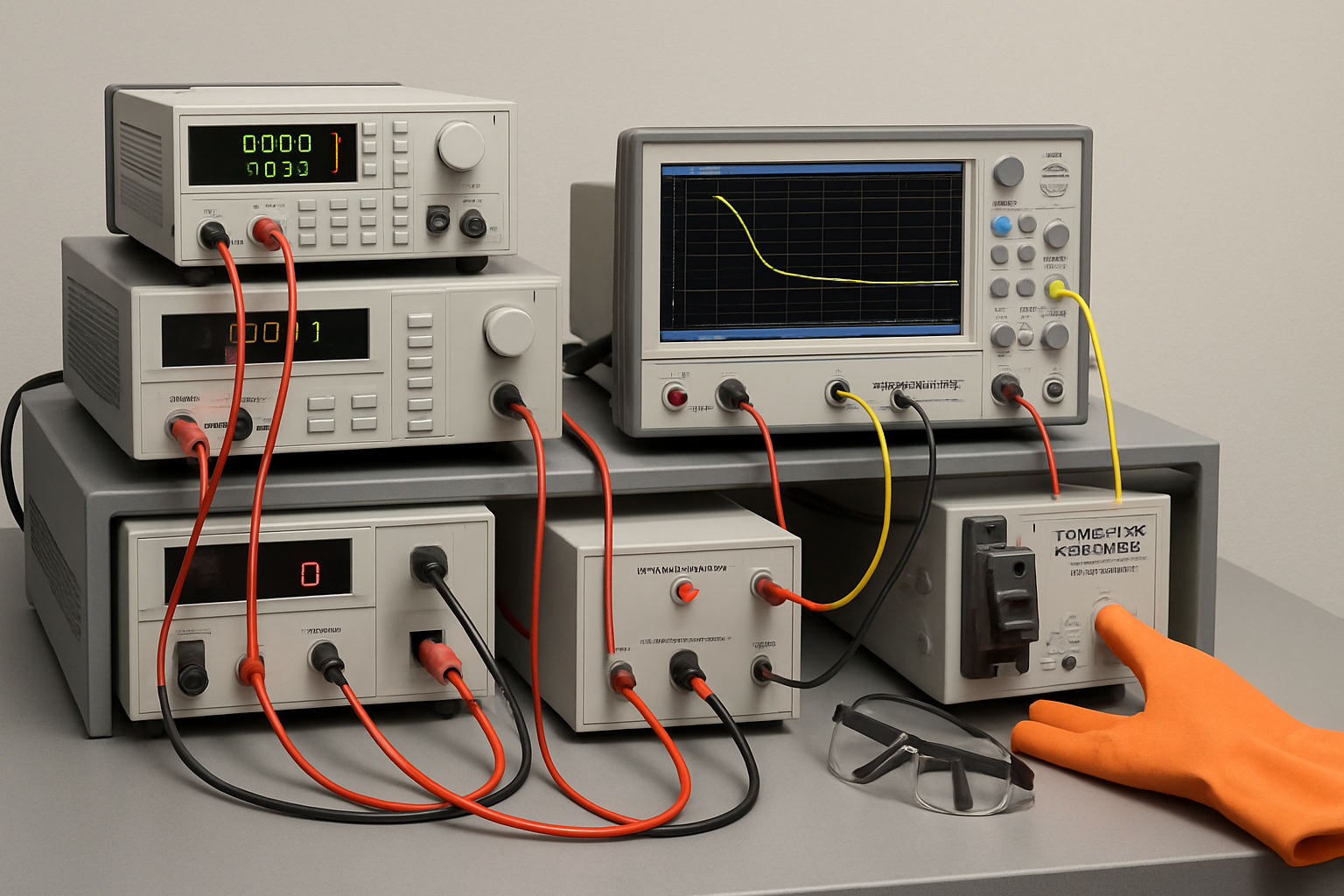PV plugs are small, but they often set the pace for uptime. Each mate–unmate event adds wear that can increase contact resistance and the chance of heat, arcing, or moisture ingress. Field experience and lab work align on the pattern: as mating cycles accumulate, failure risk rises unless maintenance and replacement policies stay ahead of the curve.
Why this matters system-wide: reliability issues at small interfaces scale up. Independent research has linked connector problems to underperformance, nuisance trips, and, in rare cases, thermal damage. Recent analyses further quantify cost and LCOE impacts when connector reliability lags. See the latest work on connector failure modes and O&M impacts from a national laboratory, which models frequencies and costs for PV connector failures (NREL 2025; background and case evidence in NREL 2024, NREL 2022).
Mating cycles and why they push failure rates up
What counts as a mating cycle and typical ratings
A mating cycle is one complete connect and disconnect. Connector endurance is defined by product datasheets within the framework of standards such as UL 6703 and IEC 62852 check routines. Rated mating cycles vary by design and materials; some products specify a few dozen cycles while others specify higher counts. In practice, commissioning, troubleshooting, and portable use can consume the rated cycles faster than expected. Always treat the datasheet rating as the cap and track actual usage.
Wear mechanisms linked to cycles
- Contact resistance growth: micro-motion and film transfer change the plated surface; resistance drifts upward.
- Spring force reduction: fatigue lowers normal force, increasing micro-arcing at make/break and under ripple currents.
- Seal degradation: repeated couplings nick O-rings and latch sleeves, reducing ingress protection and inviting corrosion.
Because I²R heating concentrates in a very small volume, even milliohm-level drift can matter. Screening limits should be tied to current and ambient conditions and verified against each connector’s temperature-rise rating in the standards framework (IEC 62852 test sequences).
Field-shaped model: cycles vs failure risk (screening view)
The table below summarizes a practical screening model that blends accelerated testing insights with site inspections. It does not replace product datasheets or certification tests; it helps prioritize maintenance and connector replacement. Percentages indicate the share of pairs likely to exceed the stated thermal rise under steady irradiance, based on field thermography and resistance screening reported in recent industry and lab case studies (NREL case investigations).
| Mating cycle range | Typical contact resistance (per pair) | Hotspot likelihood at ~1.5× Isc | Dominant concerns |
|---|---|---|---|
| 0–5 | ~0.3–0.8 mΩ | Low (<5% >20°C rise) | Assembly errors, crimp quality |
| 6–15 | ~0.6–1.2 mΩ | Moderate (5–10%) | Initial plating wear, latch wear-in |
| 16–25 | ~0.9–1.8 mΩ | Raised (10–20%) | Spring-force drift, micro-arcing marks |
| 26–50 | ~1.5–3.0 mΩ | High (20–35%) | Seal nicks, oxidation, heat discoloration |
| >50 | ~2.5–5.0 mΩ | Very high (>35%) | Visible pitting, lock fatigue, ingress |
Notes: Ranges reflect field screening with four-wire resistance measurements on tin-plated PV plugs under comparable conditions. Thermal likelihood assumes unshaded connectors near mid-day irradiance; confirm against temperature-rise limits in product data and standards (IEC 62852).
Testing methods that catch wear early
Four-wire contact resistance (preferred)
- De-energize and isolate the string; apply lockout/tagout.
- Mate the plug pair and use a Kelvin probe or dedicated adapter.
- Screening bands (example): ≤1.0 mΩ (baseline), caution at 1.0–1.5 mΩ, replace at ≥1.5–2.0 mΩ or if readings are unstable. Record value, current, ambient, and cycle count. Align with post-test limits in standards routines (IEC 62852 check routine).
Thermography under load
- Scan at steady irradiance (target ~0.8–1.0 kW/m²) and stable current.
- Use emissivity appropriate for polymer housings; compare to ambient and neighboring connectors.
- Action flags: any connector ≥20–30°C over ambient at typical string current, or one pair significantly hotter than peers. Condition-based maintenance with IR is a recognized best practice in electrical systems (Preventive thermography guide; EPRI guideline).
Millivolt drop check
- Under steady current, measure millivolts across the mated pair using piercing probes on crimp barrels or adapters.
- Rule of thumb: ≤20–30 mV at ~12 A. If ≥40–50 mV, investigate crimp quality, contamination, or cycle wear.
Visual & mechanical inspection
- Check latch wear, O-ring damage, cracked housings, discoloration, green/black films, or arc marks.
- Confirm wire gauge, crimp die profile, and full conductor insertion. Early-life failures are often crimp-related—outside module tests and captured only by connector standards and installation instructions (UL 6703).
Replacement thresholds and handling rules
Cycle-based replacement
- Plan to replace pairs that exceed their rated mating cycles per the datasheet. Where frequent service is expected, add sacrificial adapters so field plugs on strings do not accumulate cycles.
Measurement-based replacement
- Replace if contact resistance ≥1.5–2.0 mΩ (screening), if thermal rise ≥30°C at typical current, or if millivolt drop suggests rising resistance under stable load.
- Replace on sight if pitting, melting, latch fatigue, or O-ring damage is present.
Assembly and compatibility
- Do not mix different connector families unless they are explicitly listed as compatible. This is reinforced by field guidance and by electrical codes governing connectors and installation to listing instructions (NEC 690.33 discussion; connector compatibility guidance).
- Use the specified crimp die and pull-test each crimp during commissioning. Keep connectors capped/clean and avoid live-mating under load.
- Log each mate/unmate. A simple tag or CMMS entry prevents accidental overshoot of rated cycles.
Impact on ESS performance and cost: quick math
Consider a 12 kW rooftop PV feeding a hybrid ESS with 10 strings at ~12 A. If average contact resistance per plug pair drifts from ~0.6 mΩ to ~1.8 mΩ due to repeated mating, added dissipation per pair increases by ~1.2 mΩ × 12² A² ≈ 0.17 W. Across ~20 plug pairs in the combiner path, this is ~3.4 W around noon—small in absolute terms but concentrated in tiny interfaces. Over months of high irradiance, that localized heat accelerates aging and drives intermittent faults. These mechanisms and their economic weight are consistent with recent connector failure assessments and O&M models (NREL 2025).
Field practices that bend the risk curve
- Procurement: buy matched connector sets and the correct crimp tools; track batch/lot codes.
- Commissioning: verify every crimp with a pull test and a spot mΩ measurement; record baselines.
- Operations: annual IR scans plus spot checks after service work; any diagnostic disconnect is logged and re-verified.
- Portable use: install short sacrificial jumpers as the daily interface and replace them on a fixed count well below the rated limit.
- Repairs: if a plug overheats, replace both halves and the crimped ferrules; heat-weakened springs can fail later under load.
Standards and system guidance reinforce this approach: maintain temperature-rise margins, verify resistance after environmental sequences, and avoid incompatible mating. See IEC 62852 check routines for resistance/thermal criteria and UL 6703 scope for connector construction and evaluation.
Data table: cycle count vs screening targets
| Cycle bin | Target contact resistance | Target IR hotspot (at rated current) | Action |
|---|---|---|---|
| 0–5 | ≤1.0 mΩ | ≤15°C over ambient | Baseline record |
| 6–15 | ≤1.2 mΩ | ≤20°C | Re-test next service window |
| 16–25 | ≤1.5 mΩ | ≤25°C | Plan replacement at scheduled downtime |
| 26–50 | ≤2.0 mΩ | ≤30°C | Replace promptly; review usage pattern |
| >50 | Often >2.0 mΩ | Often >30°C | Replace and audit process |
Putting it into daily operations
Residential and C&I rooftops
Keep mating cycles minimal during commissioning and service. I log every disconnect and verify each re-connection with a quick mΩ check. Adapters and test leads protect field plugs from unnecessary handling.
Ground-mount and utility systems
Adopt route-based IR inspections and sample resistance checks per block. Correlate hotspots with wind exposure and row tilt. Track cycle counts by crew and phase to find pockets with heavier handling and intervene early.
Portable and temporary arrays
Shift daily mating to low-cost sacrificial jumpers. Rotate spares and cap exposed ends. Replace jumpers on a fixed count below the datasheet limit to keep risk low.
Standards, codes, and further reading
- UL 6703 – Connectors for Use in PV Systems
- IEC 62852 – Check routine highlights
- NEC 690.33 compatibility and self-locking discussion
- Connector compatibility and installation guidance (field)
- Impacts of PV Module Connector Failures on Cost & LCOE (NREL 2025)
- Durability & failure analysis of BOS connectors (NREL)
Safety notice: work de-energized, follow local electrical codes, and use appropriate PPE. This material is technical guidance only, not legal advice.





Leave a comment
All comments are moderated before being published.
This site is protected by hCaptcha and the hCaptcha Privacy Policy and Terms of Service apply.